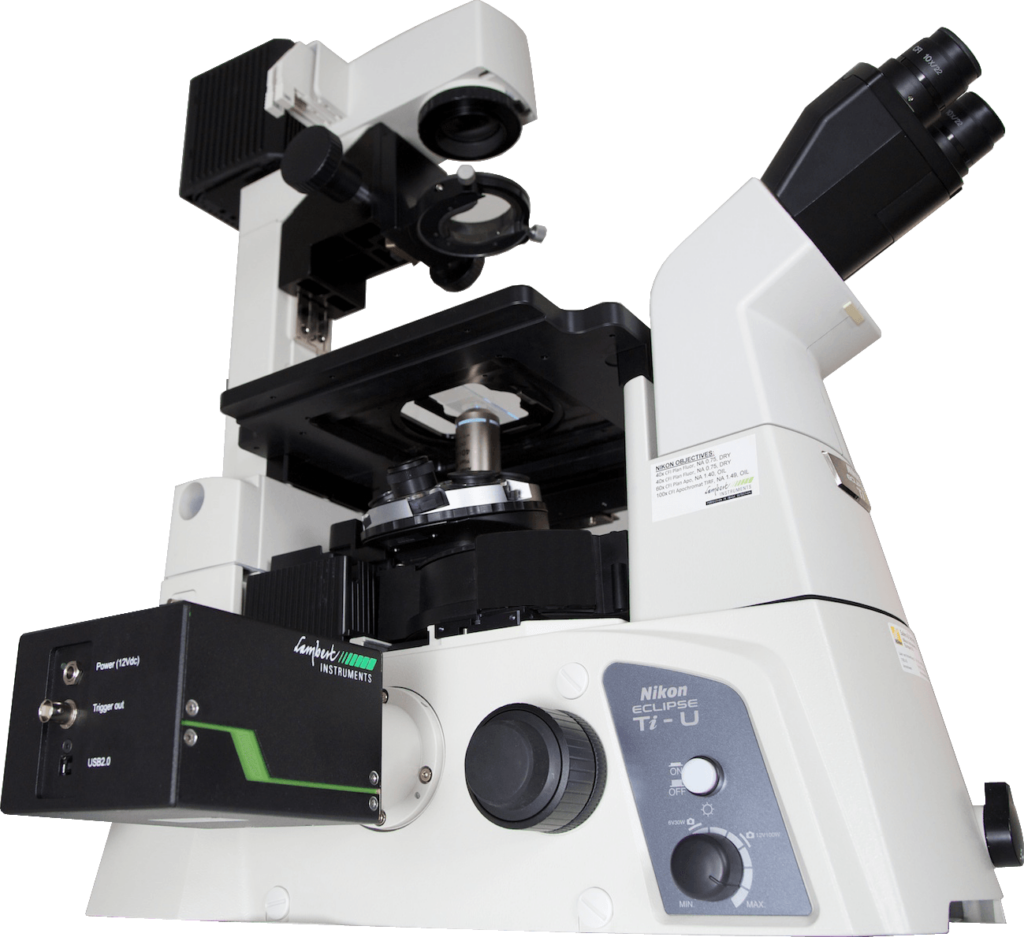< Back
Intensifier Control
FLIM-FRET Experiments
Fluorescence Lifetime Imaging Microscopy Forster Resonance Energy Transfer (FLIM-FRET) has a lot of advantages over other FRET detection techniques. A major advantage is that FLIM-FRET measurements are more robust and quantitative than the FRET measurements done by, for example, sensitised emission FRET. Another advantage is that only the lifetime of the donor fluorophore has to be measured; steps to determine acceptor lifetimes are not needed. The acceptor fluorophore may therefore have an inefficient emission, or even may be a quencher, and still good quality FRET-data can be retrieved. This makes the FLIM-FRET method more versatile, faster, and easier. Furthermore, no corrections are needed for donor fluorophore emission bleed through in the acceptor emission channel.
Acceptor Photobleaching
When photobleaching the acceptor fluorophore during FRET, the non-radiative transfer of energy from the donor to the acceptor decreases. The donor fluorophore, in its turn, loses less energy and its fluorescence lifetime, with respect to FRET without a photobleached acceptor. Only when the acceptor is bleached completely, the lifetime of the donor fluorophore will be similar to the situation of no FRET occurrence (a donor-only situation).
Enhanced acceptor Flourescence (EAF)
In the case where the donor and acceptor fluorophores are both excited with the same excitation light wavelength, e.g. in the FRET pair GFP-YFP, a special kind of FRET can be detected. Namely, the average lifetime that is calculated is the contribution of both donor and acceptor fluorophores. Taking GFP and YFP as an example, GFP has a small lifetime compared to YFP. When no FRET is occurring, the average lifetime is measured of both GFP and YFP that are both excited by the 480nm wavelength light source. However, when FRET occurs, the energy of the GFP proteins transfers non-radiatively to the YFP proteins, so relatively more YFP emission (with a long lifetime) is taken into account. So, the average lifetime increases instead of decreases, as is normally the case when you measure only the lifetime of the donor fluorophore.


